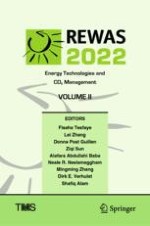
2022 | OriginalPaper | Buchkapitel
Development of a Thermodynamic Model for Chromates, Molybdates, Tungstates, and Vanadates Involved in the Corrosion of Steels (Fe, Cr, Ni, Mo, W, and V) at High Temperatures in Atmospheres Containing O–H–S–C–Cl and Alkaline Salts
verfasst von : Sara Benalia, Christian Robelin, Patrice Chartrand
Erschienen in: REWAS 2022: Energy Technologies and CO2 Management (Volume II)
Aktivieren Sie unsere intelligente Suche, um passende Fachinhalte oder Patente zu finden.
Wählen Sie Textabschnitte aus um mit Künstlicher Intelligenz passenden Patente zu finden. powered by
Markieren Sie Textabschnitte, um KI-gestützt weitere passende Inhalte zu finden. powered by